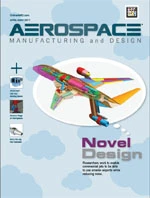 Originally developed to meet aerospace requirements for a screw thread, to provide maximum fatigue strength for fastening safety critical components subjected to high stress loads, is the UNJ profile. The basic profile includes a controlled root radius on the external thread, which is larger than specified for UNR threads. Increase on both the external and internal thread, of the minor diameter, is to accommodate the larger external root radius. Control of the pitch diameter is to a close tolerance with Class 3A for external and Class 3B for internal.
Originally developed to meet aerospace requirements for a screw thread, to provide maximum fatigue strength for fastening safety critical components subjected to high stress loads, is the UNJ profile. The basic profile includes a controlled root radius on the external thread, which is larger than specified for UNR threads. Increase on both the external and internal thread, of the minor diameter, is to accommodate the larger external root radius. Control of the pitch diameter is to a close tolerance with Class 3A for external and Class 3B for internal.
Producing UNJ threads, particularly the internal form, can be very challenging because not only must the thread limit dimensions hold to a close tolerance, but often aerospace components have blind holes that require the effective thread length to be within one pitch of the hole’s bottom. And, to add to the overall difficulty of internal J series threads, aerospace components are commonly made from materials such as 718 inconel, 6Al4v titanium, and 17-4 Ph /15-5 Ph stainless steel.
With the ever-increasing use of CNC machines to produce aerospace components, thread milling offers manufacturers numerous benefits when compared to tapping because it has fewer cutting condition limitations. Thread mills have an advantage over taps because they form and evacuate chips more efficiently using an interrupted cutting process, and generate significantly lower cutting torque without the necessity for a high lubricity coolant or hand- applied tapping paste/oil. Additional benefits of thread milling J series threads are:
- High process security and control;
- Produces threads with excellent form, finish, and dimensional accuracy;
- One tool can machine all difficult aerospace materials up to 58Rc;
- Eliminates the possibility or consequences of broken taps;
- Achieves full-bottom threading and precise depth control in one operation;
- Pitch diameter is easily controlled with CNC offset;
- Tool crib stock can be reduced while still covering a wide range of applications; and
- Quick adaptation to a variety of threading applications for improved delivery performance.
Design of Emuges’ latest generation of carbide thread mills enables improved competitiveness of all sizes of aerospace machine shops by offering an easier and more efficient way to work in a broad range of difficult-to-machine materials, under differing work conditions, and with the ultimate security and flexibility for rapidly changing manufacturing environments.
Application Examples:
Example #1
Part Description: Landing gear component
Part Material: 15-5 PH stainless steel @ 42Rc (H925)
Thread Size: #10-32 UNJF-3B
Thread depth: 0.375" – Effective thread depth to within one pitch of bottom
Old Method: Start thread on CNC machine and finish with secondary hand tapping operation.
Problem: High tooling costs due to low tap life, frequent tap breakage, and modification of chamfer on finish tap. High labor cost due to hand tapping operation. High scrap and rework costs due to inconsistent thread quality, tap breakage, and broken tap removal.
New Method: Thread completed in one operation on CNC with Emuge solid carbide thread mill, type GFI-IKZ Ticn, GFR351065041.
Result: Significant cost savings achieved by eliminating hand tapping operation, no modification of tool required, tap breakage eliminated, thread quality improved, 10x increase in number of holes produced with one thread mill compared to two machine taps, 35 minute time savings per part, and improved delivery performance.
Example #2
Part Description: Flight control component
Part Material: 6Al4V titanium
Thread Hole Type: Blind
Thread Size: 7/16-20 UNJF-3B left-hand
Thread Depth: 0.850"
Old Method: Special manufactured machine tap (initial order five pieces) run on CNC machine with synchronous cycle and hand applied oil lubrication. All taps broke at less than five holes per tap.
New Method: Thread is completed in one operation on a CNC with catalog standard Emuge solid carbide thread mill, type ZGF-IKZ Ticn, GFS331065012.
Result: Completed the first batch of parts (150 pieces, two holes per part) with one thread mill; through-spindle coolant supply was used for cooling and no hand oiling of the tool was required. The process produced cost-effective, high quality threads, with high process security and without the need for special tooling.
Emuge Corp.
W. Boylston, MA
emuge.com
Get curated news on YOUR industry.
Enter your email to receive our newsletters.
Explore the May June 2011 Issue
Check out more from this issue and find your next story to read.
Latest from Aerospace Manufacturing and Design
- Lockheed Martin, NASA X-59 takes flight
- Claw jaws for maximum clamping force
- #53 Lunch + Learn Podcast with Iscar
- PI moves into new US headquarters
- Indexable thread milling grade with PVD aluminum oxide coating
- Falcon Aviation Services orders 50 eVTOL aircraft from AutoFlight
- Finned rollers for firm, safe, efficient parts handling
- Vietjet finalizes order for 100 Airbus A321neo aircraft








